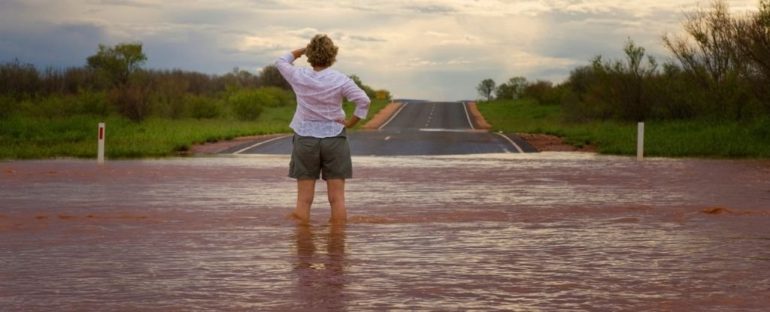The United Nations calculated that extreme weather events resulted in 15,000 deaths and resulted in economic losses of US $170 billion in 2020.
Storms, floods, and droughts can be catastrophic for people and the environment, but are these events on the rise? We asked 4 experts in climate science ‘Are extreme weather events becoming more frequent globally?’, here is what we found.
What are extreme weather events?
Extreme weather means weather events that are rare for the place and time that they are in, such as a snowstorm in Hawaii. It can also mean weather that strongly impacts day-to-day life, such as severe storms and droughts.
Blizzards, floods, droughts, hurricanes, tornados, and heatwaves are extreme weather events. To understand if extreme weather events are changing, experts say it varies depending on the type of weather event.
Dr Geert Jan van Oldenborgh, an expert in climate science from the Royal Netherlands Meteorological Institute, says, “Some types of weather events are becoming more extreme, such as heatwaves or intense precipitation. Others are becoming less extreme, such as cold waves. And many fall in between: in some areas, drought becomes more extreme, in others less so”.
What is the evidence that extreme weather events are becoming more frequent?
Dr Michael Wehner, an expert in climatology from the Lawrence Berkley National Laboratory in the US says, “Certain types of extreme weather have already become more severe because of human-induced climate change. Other types of extreme weather are expected to become more severe as the climate warms, but changes have not definitely been found so far.”
The types of extreme weather that have been observed to become more severe include heatwaves, droughts, and extreme precipitation. While snowstorms and blizzards will likely become less frequent and severe.
For other types of extreme weather events, like hurricanes, the evidence is more nuanced. Scientists expect more intense, bigger, and longer-lasting storms, but actually fewer storms overall. These bigger hurricanes might also produce much more rainfall.
Dr Wehner says, “Hurricanes and tropical cyclones have been extensively studied and found to have greater amounts of precipitation than there would have been had humans not interfered with the climate system…While increases in hurricane precipitation are well-established, increases in the wind speed of intense hurricanes are also expected. However, these expected extreme wind speed increases are yet to be robustly detected due to signal to noise issues.”
Some forms of extreme weather are so difficult to measure that it is not possible to definitely say if they are becoming more severe or not.
“Very localized storms such as tornadoes, mesoscale convective systems, and derechos are data limited, so formal detection and attribution has not yet been performed,” explains Dr Wehner.
Professor Kevin Trenberth, a leading atmospheric scientist, makes an important distinction for us relating to this question: “A key point here is that there are not more of these events (mostly) but rather the events that do occur are associated with greater extremes on the warm side for temperatures, and at both ends of the water cycle.”
Why are extreme weather events on the rise?
As highlighted by Dr Wehner, it is well established that extreme weather events are and will continue to increase because of climate change.
Dr Walter Robinson, an expert in climate science from North Carolina State University in the US, says, “As the climate warms, not surprisingly we see more and more extreme heat events”.
Warm climates then have knock-on effects. Dr Robinson explains: “Because extreme heat increases evaporation, soils, and vegetation dry out faster when it is hotter. Thus, heatwaves are often associated with drought.”
Interestingly, warmer climates can cause extreme precipitation as well as droughts. Dr Walter goes on, “As temperatures increase, the amount of water vapor in the air, in moist conditions, increases (we say the atmosphere can ‘hold’ more water vapor). This is a strong effect – roughly a 7 percent increase in water vapor (at saturation) for every degree Celsius rise in temperature. Because atmospheric water vapor converts to rain in clouds, as climate warms we expect the heaviest rains will become heavier. There is strong observational evidence that this is happening.”
The effect of increased temperature on cloud formation also influences extreme storms. Dr Walter says, “When water vapor condenses in clouds, it releases heat. This ‘latent’ heat provides the fuel for many kinds of storms: tropical cyclones (hurricanes) and ordinary and severe thunderstorms. It is likely, therefore, that some storms are becoming more violent as climate warms – for example, the strengths of the strongest tropical cyclones appear to be increasing.”
He concludes, “There are many other ways through which climate change can lead to increases in extreme weather. These are less certain than the direct effects of heat, drying, and water-holding capacity described above, however, and the topics of very active research in climate science.”
The takeaway
Extreme weather events like heatwaves, droughts, and extreme rainfall are becoming more frequent as a result of climate change. Others, like snowstorms, are likely becoming less frequent. Hurricanes are likely to become bigger and longer-lasting, but actually fewer in number – but the observational evidence for this is not yet clear.
Article based on 4 expert answers to this question: ‘Are extreme weather events becoming more frequent globally?’
This expert response was published in partnership with independent fact-checking platform Metafact.io. Subscribe to their weekly newsletter here.



